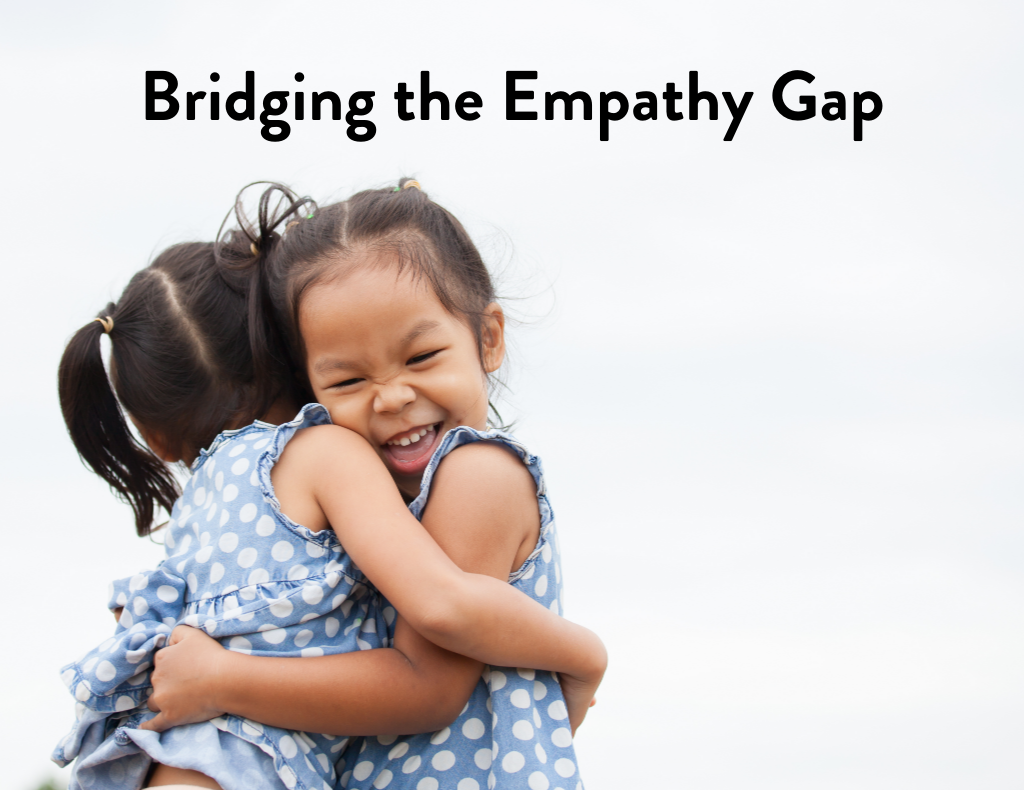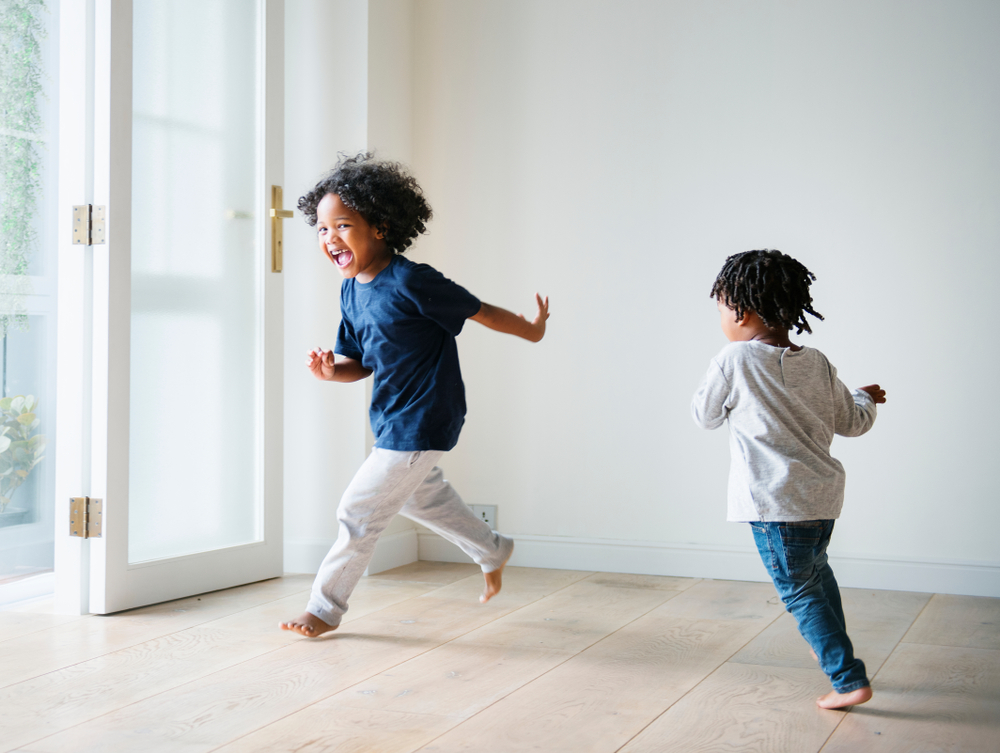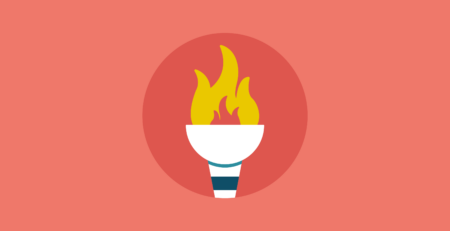Shani Dowell, Possip founder, shares her perspective on bridging the empathy gap in children.
Surprising to even ourselves, this pandemic year has brought a lot of joys to our family. Our kids have more freedom as we allowed them greater freedom to roam the neighborhood and play outside. They increased their pleasure reading. We spent more time together as a family than ever before (I think we may have reached a point of diminishing marginal utility on that one). And even as a family where both mom and dad were experiencing the high levels of stress that come from working within the field of education during this time, we are transitioning from this pandemic year feeling good about the job we have done with our kids.
A special moment came a few weeks ago – Spring Break. With multiple family members vaccinated, we decided to come together with my parents in Louisiana. We gave my parents/my kids’ grandparents a hug for the first time in over a year.
And just a few hours after that short hug, I had a big aha about what has actually been missed from this past year – what gap may have inadvertently widened – an empathy gap.
It’s hard to imagine that in a year with unspeakable death, sadness, and sickness, kids could suffer from less empathy. But as I watched my kids I started to wonder if maybe, indeed, they had…and I knew I had only myself to blame.
A friend of mine, Anderson Williams, articulated this well in his post Growing Small Again as he described how his world started to open up outside of the smallness of his hands. I think similarly, for my kids, their world got a little too small this year. And maybe revolved a bit too much around themselves. As I watched my kids talk to my parents, my kids just appeared a bit less empathetic than I would have hoped. But that led me to think what may have created that.
I realized that over this past year my kids had…
1 – only seen and processed the world through their own eyes
2 – their own issues and sacrifices felt most important and bigger than others
3 – not had the pheromones or energy of others
4 – less experience feeling left out
5- a mom with too little energy to process or lean in for those teachable moments
6 – limited car time, which I consider low-risk time where an overheard NPR story can lead to a deep conversation
In a year that was wearing me out, it was possible that I was also less gentle. Watching the world from afar I was often in a mindset of judgment. Who was or wasn’t social distancing. Who was or wasn’t masking. We were more harsh and critical on our neighbors as what was being asked us of was more than ever.
And if you go to Twitter or social media, it is clear that we are all likely suffering from an empathy gap.
As we try to return to some semblance of normalcy, closing the empathy gap that may have widened over this past year is more important for me than most any other gap that is being discussed.
Bridging the Empathy Gap in Children
For me this looks like:
1 – Spending time with trusted family members.
Encourage them to be open about their feelings with family and friends. Spending time with my parents allowed my children to express some thoughts, ideas and feelings that they’ve likely had. But with the love and wisdom that only a grandparent can provide, my parents were able to ask questions, lean in, and share stories that helped my kids be more gentle – with us, their own parents, and hopefully others. According to Harvard’s Graduate School of Education’s ‘Cultivating Empathy’ resource, encouraging children to be open about their feelings with family and friends can help foster empathy, and teach them to rely on and reach out to supportive networks outside of their parents too.
2 – Telling wider and fuller stories to my kids.
This year when we were so overwhelmed by school, food, work, and recreation at home, I just didn’t have the energy for nuance. So everything got boiled down to “if folks would just XYZ.” I need to help my kids understand a fuller story. There are lots of reasons why folks may have chosen to not wear facemasks. There are many reasons people feel hurt. I can help my kids build more empathy by telling a fuller story.
3 – Send my kids back to school.
I know this isn’t an option for many, or it may not be the best choice for many. But even through understanding and seeing that in action, it will help my children develop some empathy. I want my kids to be in the presence of other kids – hear from and think about other kids. This Frontiers in Psychology study “emphasize(s) the importance of bodily awareness and the positive effect of paying sufficient attention to the outside world and other people’s mental states.” Through the pandemic, an arguably heightened awareness of each other’s mental states has arisen. Now, there’s a need for this awareness to extend beyond our immediate family and friends. There’s a difference between sitting next to a classmate in class and looking at their box on Zoom or Teams. I want my kids to physically look at and see others around them.
4 – Maximizing car time.
As things open up I’m in the car with my kids more. This is such a valuable time for me to listen to them and ask them questions. I also let external prompts like the radio, traffic, and billboards help open up some conversations for us. Teaching our kids to help others is important, but it is equally important to emphasize listening and understanding without intervening. As parents, we can encourage all of our children to understand someone and empathize with them simply to be with them. Creating space for children to listen to understand is a part of this.
In addition to these practices, I have found several resources to guide parents in bridging the empathy gap in children:
- How Parents Can Cultivate Empathy in Children by Harvard Graduate School of Education
- Building Empathy in Children and Teens by MediaSmarts
As we experienced a week that I’d like to say was abnormal – but sadly is becoming increasingly normal – I was reminded why empathy is so important and also why it is so difficult. In Tennessee alone we experienced a shooting and killing of a high school student in school, the killing of a 3 year old, and multiple killings of unarmed Black men and boys by police.
For our own self-preservation some of these stories are hard to sit with. And yet as parents and educators we have to figure out how to build empathy for our kids without hardening them with all the realities that we know are ahead of them.
Special thanks to Isha Soni, a Possip Intern studying International Studies and Interdisciplinary Studies at Emory University, for contributing to the research cited in this blog.






